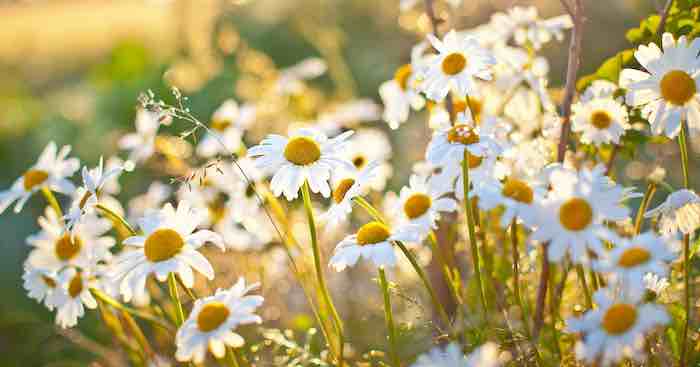By Wes Porter ——Bio and Archives--August 10, 2019
Lifestyles | CFP Comments | Reader Friendly | Subscribe | Email Us

When songwriter Harry Dacre penned those lines in 1892, he was commemorating a hot-blooded London socialite named Daisy Granville. She is perhaps better known today as the respectable Lady Warwick – and much less respectable mistress of ‘Dirty Bertie’ the Prince of Wales, later Edward VII of the British Empire.
Designated in Old English as dægeseage, ‘day’s eye’ made for a popular girl’s name. Bellis perennis, commonly called Common Daisy, Lawn Daisy, or English Daisy, is a native to Europe. A noxious lawn weed to some, a beloved flower to others, it has attracted more attention than many other such lowly blooms.
“The poet’s darling,” William Wordsworth called it when not revelling in the delights of golden daffodils. A millennium and more prior to his declaration, it had entered Norse mythology as sacred to Freya, goddess of love, beauty, and fertility. Probably not knowing of this association, young girls created of daisy chains, whiling away warm afternoons. “Madeline Bassett was soppy, true. She had large, melting eyes and thought the stars were God’s daisy-chain” wrote P. G. Wodehouse: Joy in the Morning (1947).
Bright and cheerful, a person may be described as “fresh as a daisy.” Less pleasantly, when deceased, as “pushing up daisies.” The sporting set have chipped in with “daisy-cutter,” a low played cricket ball just skimming the turf. Meanwhile, in The Code of the Woosters (1938), P. G. Wodehouse uses a rarely heard today: “When the fields are white with daisies, if not sooner,” indicating when we will meet. ‘Plum’ Wodehouse seemed to be attracted to the flowers.
So have the French to whom it is pâquerette – and, according to no less an authority than Larousse Gastronomique (1938), its young leaves and buds are eaten in salads.
So have many another community. Almost a dozen places in the United States have been named ‘Daisy,’ followed by geographical locations in Australia and Canada. The plants are also commemorated in a few films, many songs – and the Daisy brand of air rifles. Horticulturally, it is much less threatening.
Being able to survive in temperatures as low as minus 34ºC allowed it to migrate over much of the temperate globe. Horticulturalists, realizing the versatility of Bellis perennis, have created single- and double-flowered cultivars to brighten beds and borders.
The chorus of Harry Dacre’s ‘Daisy, Daisy,’ refers to her looking sweet upon the seat of a bicycle made for two. Clearly, as Stephen Clarke suggested, had Harry heard about Bertie’s infamous designs for furniture to accommodate sex. What the over-active prince would have done had he ever met with Daisy Dukes of television series The Dukes of Hazard fame who gave her name to extremely abbreviated shorts remains a subject of conjecture.
View Comments
Wes Porter is a horticultural consultant and writer based in Toronto. Wes has over 40 years of experience in both temperate and tropical horticulture from three continents.